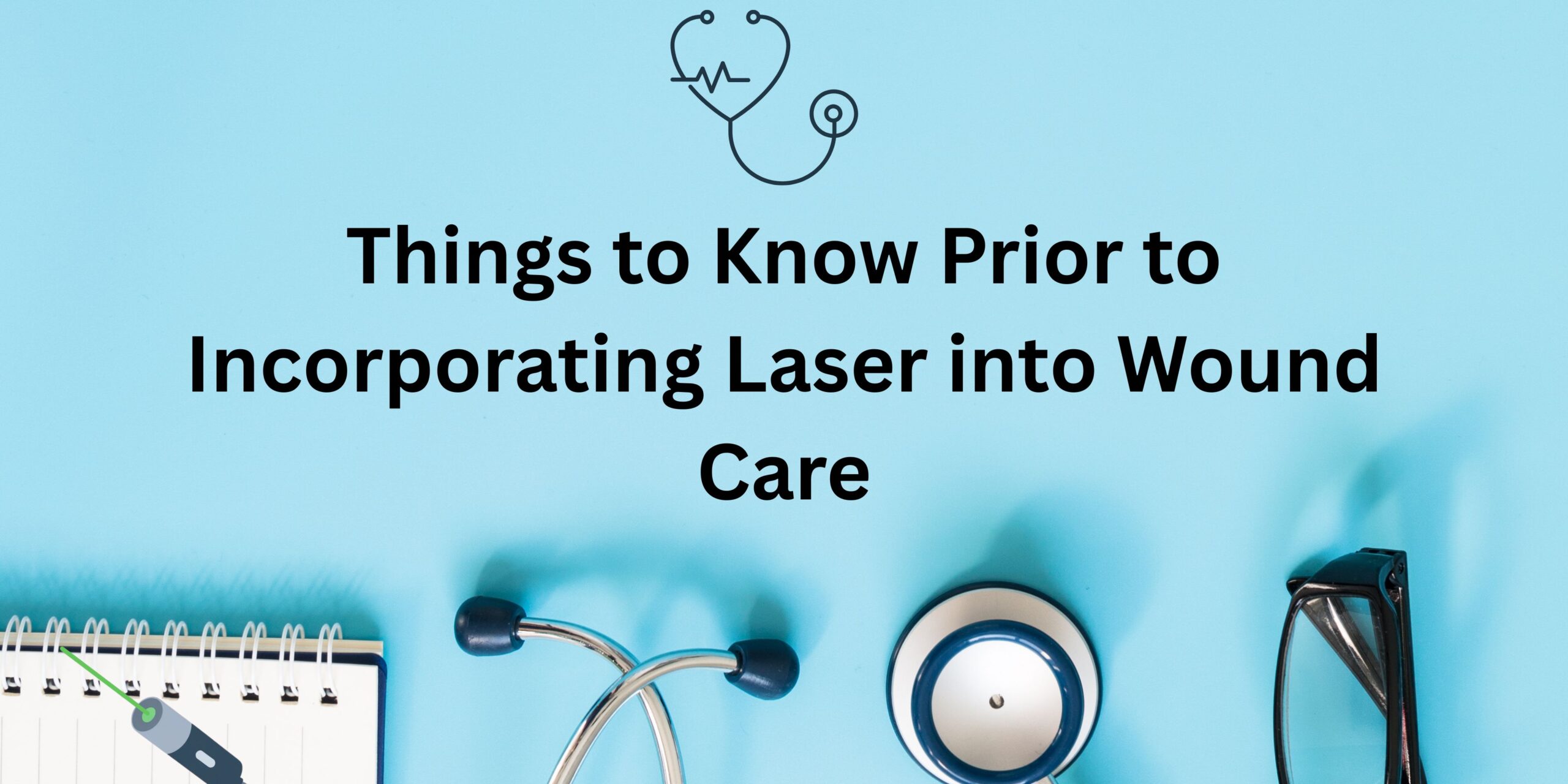Blog
Things to Know Prior to Incorporating Laser into Wound Care

Laser therapy is changing the face of outpatient wound care by allowing for wound healing optimally and painlessly without invasive techniques. For physicians who want to use this technology, it is important to understand important considerations for safe and effective treatment, selection of the appropriate device, and integration into practice. Adequate preparation and knowledge can provide optimal outcomes to the patient, as the technology is clinically adopted into practice.
Value of Laser Therapy Within Wound Care
Laser therapy functions through photobiomodulation to enhance tissue repair and regeneration of all types. Lasers, by emitting wavelengths of light, increase cellular activity, tissue perfusion and reduce inflammatory reactions to improve the wound healing process. The physician caring for a diabetic foot ulcer, a venous ulcer, a pressure sore, or a post-operative wound may incorporate or add laser therapy to standard wound care treatment.
Before incorporating laser therapy to care, it is valuable to look at evidence in the clinical literature, including studies, case reports, or outcomes in patients previously treated, to better understand its effectiveness and feel confident treating patients with the modality.
Training and Clinical Competency
The Importance of Training
Personal training creates the foundation for safe and effective laser therapy. A physician must acquire both theory and hands-on experience to achieve the best result.
What Training Involves
Laser Physics and Wavelengths: Understanding tissue interaction within the various wavelengths.
Treatment Protocol: Change of energy and time to the various wound types and depths.
Patient Selection: Identifying both best and contraindications.
Acute education is available from many device manufacturers and medicine associated to be sure that the physician and staff are clinically ready.
Safe Practice Protocols and Patient Safety
Laser therapies are very safe procedures but safety protocols must always be adhered to without compromise.
Protective Measures: The use of appropriate safety glasses on staff and patients are required.
Device Maintenance: Calibration of device to deliver the correct energy.
Infection Control: Equipment and treatment area sanitation.
Educating the patient about the procedure, sensation experienced, and post-therapy instructions creates trust and improves experience.
Choosing Your Laser Device
The right choice in laser device is critical to your ability for a successful implementation. There are multiple areas to think about:
Wavelength Range: Various wavelengths allow for flexibility when treating different depths of wounds.
Power & Flexibility: Flexible settings for varying wound types.
Ease of Use: User-friendly interface for easy operation.
Choose a reputable supplier that can provide training, technical support, and warranty services for your device to ensure reliability over time.
Embedding Laser Therapy into Clinical Practice
Choosing laser therapy is more than just a one-time purchase of laser equipment; it involves embedding it into clinical practice.
Establishment of Protocols: To embed laser therapy clinic-wide, alignment of laser sessions to existing wound care protocols is a required basis.
Team Training: Nurses, technicians, and even admin team members must be oriented towards the protocol.
Pilot: Start in a dedicated wound care clinic or OPD room to gain experience before moving on to broader rollout.
Communication among staff is helpful for seamless integration, as well as providing consistent treatment protocol to patients lengthening the protocol.
Evaluation of Outcomes and Ongoing Improvement
It is important to measure clinical outcomes to substantiate expenditure and improve protocols. Outcomes to include specific examples of key performance indicators:
Wound Closure Rates
Reduction in pain
Preventing the recurrence of the wound
Patient Satisfaction
Regular audits, reviews of cases, and continuing to read and learn new research and advancements in device technology will allow physicians to provide effective treatments while maintaining high standards by drawing on the most recent advancement in laser wound care.
Conclusion
Laser therapy is a revolutionary treatment option for physician to begin utilizing to speed up the healing process along with providing better care for their patients. Once you consider the training, safety, device selection, and how the therapy will be integrated into your day-to-day practice, physicians can begin use laser therapy with confidence. If done properly, this technology can move clinical outcomes forward and ultimately modernize wound care.
